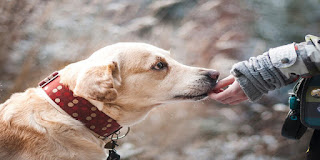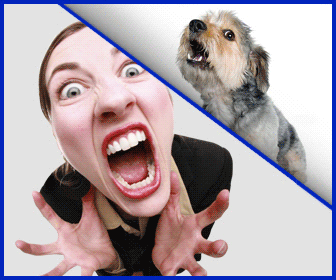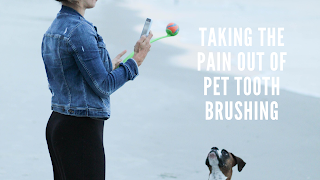Learn how to breed and care for small dogs in 5 points
Learn how to breed and care for small dogs in 5 points
What are dogs?
- The Germanic dog breed is one of the fiercest types of dogs that can be used for personal guarding purposes and therefore it needs a special type of training known as acting training, that is, you simulate situations in which a person claims to attack you in order for the dog to defend you and in return, you will reward him for that. Training small local dogs are local puppies or as the term is called a municipal one of the easiest dogs that can be trained as the owner wills, whether for guarding purposes or training them to sit or play or even homogeneity with family members without attacking them and therefore it is an ideal breed for home acquisition.
- When buying or adopting a puppy, you should know how to raise small dogs and help them spend their first days at home safely. We provide you with a complete guide on everything related to small puppies, including vaccination, feeding, and other basic things that you need in a kennel.
Training small dogs to live
- Dogs never urinate and defecate in the places where they sit. So if a dog gets used to sitting inside its cage, then it will get used to the laws of the home in general. He will be able to control the excreta disposal.
- Because dogs, as we explained, do not leave their litter in their own space. So if he needs to urinate or defecate he will first have to get out of the cage, this way you should start with the first steps of training small dogs to urinate.
- Choosing the right cage is an important point in this training because if the cage is very large the dog will urinate and defecate on one side of the cage and sleep on the other side. Also, choosing a narrow cage will make the dog restrained and unable to move and thus urinate against his will because dogs cannot focus on more than one act at a time. You can read this article on training a puppy to sit in the cage.
- But if you do not have enough space or budget to buy a crate for your dog, you can still train him to use the bathroom and relieve himself easily, as we will explain in the following steps.
Training small dogs to sit
- We often see dog owners simply by pointing to the floor and saying the word Sit or find the dog whatever his age and whatever degree of ferocity he responds immediately and he sits in his place and then marvel at the extent of the dog's obedience to his owner especially if you suffer from this problem with your dogs, first, you must You should be well aware that training puppies are much easier than training for old dogs as the puppy is just like young children who are easy to raise and grow in a certain manner and habits that are appropriate for you. As for large dogs, it is most likely that you will be accustomed to a certain life system that requires you to do a little Effort to change It is not impossible at all, but it is a little more difficult.
- But in general, with regard to training puppies to sit, it is necessary that you refer to the ground and order it to sit, then gently grab it and sit it and repeat this command several times each day until the command and the signal in the puppy's head are combined to sit on the ground, and as soon as he orders him later, he will sit on his own. But be careful not to scream or speak loudly when asking to sit or grab violently puppy when seated so that the puppy does not feel that what he is doing is a ritual of punishment and not training, just repeat the process gently, softly and patiently until the puppy gets used to carrying out your orders.
Be sure to visit the vet
- A veterinarian is a regular friend of pet breeders in general, so you should choose the vet with whom you will regularly monitor your dog's health.
- You should visit your veterinarian with a small puppy to perform various vaccinations as well as to check on the health of your dog if you notice any abnormal changes to it, whether in personal care, urination habits, loss of appetite, or excessive lethargy.
- Also, it is always a good idea to visit your veterinarian to periodically examine the puppy every one or two months at the beginning of his life, so that you can know his health and also know how to take care of him in an optimal way.
Choose food for small dogs carefully
- Small puppy diets are many and varied, and vary from species to species and greatly depend on the dog's weight and breed.
- When owning a puppy in your home, be sure to choose your menu carefully, whether you are planning to feed him normal food or dry food.
- Young puppies must have a higher protein, fat, phosphorous, sodium and calcium content than large dogs, as small puppies need these substances to help their rapid growth and development of their internal organs.
- Therefore you should determine the puppy's small meals and their quantities based on these factors, and you can consult your veterinarian to find out the appropriate quantities for the puppy to help its growth.
- Beware of providing meals without consulting a trustworthy doctor, as providing more calcium than necessary, for example, can lead to the appearance of bone diseases in dogs. Necessary, for example, can lead to bone disease in dogs.
Tools for training small dogs
To be able to train small dogs to urinate and defecate, you will need some helpful tools that we can summarize as follows:
- A dog-sized crate: The cage, as we explained earlier, will help you locate the dog where it will not urinate. The cage must be of a suitable size, so it is not very large and not too small. The cage will protect your dog at times when you cannot pay attention to it and during the night when you sleep.
- Dog chain: the dog chain, although sometimes not necessary, but is an effective and aids in training. Because it makes it easier for the dog to get used to hearing and responding to commands, when going out with your dog to urinate it must be tied so that you can quickly reward him after he has finished his need until he learns that he has done the right thing.
- Dog sweets or dog rewards: Giving the little dog some rewards when urinating and defecating in the right place is a very important step in the method of training that depends on positive stimulation, rewarding the dog when performing any command correctly will teach him that every correct action is offset by a reward and therefore will always do the right actions.
- Dog Urine Remover: You should prepare with some tools that help remove urine and fecal odor if the puppy relieves his need in the wrong place. Because dogs always return to the same place that contains the smell, so removing the smell in the correct way will motivate not to return to the same place and urinate or defecate incorrectly.






